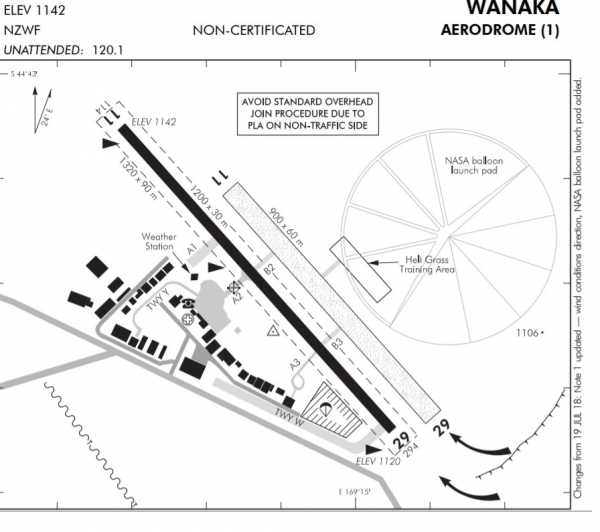
In our second blog on Wānaka Airport, we looked at the lengths of runways, why they are important and how they’re constructed. You may now be left wondering “why are runways positioned where they are?”
So, in our third blog we delve deeper into runway locations and what should be considered as part of the Wānaka Airport Master Plan.
Runway Location
The location in which a runway is built is determined as part of the airport’s individual design, looking at the prevailing winds—the direction of wind generally speaking—specific to the area, as well as flight paths and surrounding terrain.
Fast Fact: Aircraft depart and land into the wind to maximize lift and to minimize ground roll. An aircraft that attempts to land or take-off with a tail-wind, will require far more runway length than it would if landing or taking-off with a head wind.
Runways are however always laid out according to the compass with North at 360°, South 180°, East 90° and West 270° – or more precisely called runway magnetic bearing. The runways are then numbered 1-36 (knocking off the zero from the compass point above). Still with us? Good. So, a runway numbered 9 points East 90°, runway 18 is south (180°), runway 27 points west (270°) and runway 36 points to the north (360°) and so on. To add to things, there is a bit of Swedish rounding used in order to round the runway number to the nearest 10 i.e. 184° would be considered runway 18 and 185° would be runway 19.
Fast Fact: The Earth is one big magnet. The Magnetic North Pole (also known as the North Dip Pole) is a point on Ellesmere Island in Northern Canada where the northern lines of attraction enter the Earth.

Magnetic variation
Over time the difference between the magnetic compass direction and true direction can change with the Earth’s magnetism (tectonic plates etc) and this can cause a runway to be renamed. This is what’s called magnetic variation and varies all over the planet and is constantly changing. In Wānaka, the difference between true and magnetic is 24° East. So, 294° magnetic is actually 318° true. If the magnetic variation changes to 25° east, Runway 29/11 would become Runway 30/12. Pretty complex stuff, hey?
Fast Fact: Wānaka Airport’s current runway orientation is 11 (114° East) and 29 (294° North West).

Take-offs and landings A runway can normally be used for take-offs and landings in both directions (depending on the wind direction) and will have a different name for each direction: e.g., "runway 15" in one direction is "runway 33" when used in the other. The two numbers differ by 18 (ie 180°). For clarity in radio communications between pilots and ground operations, each digit in the runway name is pronounced individually such as runway one-five, runway three-three, etc. (instead of "fifteen" or "thirty-three").
If you have a love of General Aviation, check-out the documentary movie One Six Right, based on life at the Van Nuys Airport in California. Named after the airport’s runway name 16, it’s an amazing look into life at a busy GA airport.
So next time you’re landing or taking off at an airport, take a look at the runway name marked out and see if you can work out what it’s magnetic bearing location is?
Blog #4 – What infrastructure is needed at an airport?
Want to know more? Have a question about WKA you'd like answered? Get involved. Make sure you've registered to receive updates, news and to post your ideas and feedback or email [email protected]

